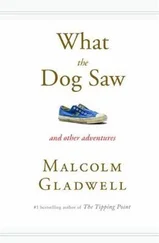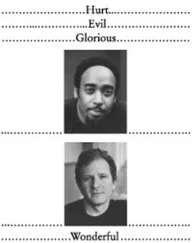Malcolm Gladwell - The Tipping Point
Здесь есть возможность читать онлайн «Malcolm Gladwell - The Tipping Point» весь текст электронной книги совершенно бесплатно (целиком полную версию без сокращений). В некоторых случаях можно слушать аудио, скачать через торрент в формате fb2 и присутствует краткое содержание. Город: Boston, New York, London, Год выпуска: 2000, ISBN: 2000, Издательство: LITTLE, BROWN AND COMPANY, Жанр: Культурология, Психология, на английском языке. Описание произведения, (предисловие) а так же отзывы посетителей доступны на портале библиотеки ЛибКат.
- Название:The Tipping Point
- Автор:
- Издательство:LITTLE, BROWN AND COMPANY
- Жанр:
- Год:2000
- Город:Boston, New York, London
- ISBN:0-316-31696-2
- Рейтинг книги:3 / 5. Голосов: 1
-
Избранное:Добавить в избранное
- Отзывы:
-
Ваша оценка:
- 60
- 1
- 2
- 3
- 4
- 5
The Tipping Point: краткое содержание, описание и аннотация
Предлагаем к чтению аннотацию, описание, краткое содержание или предисловие (зависит от того, что написал сам автор книги «The Tipping Point»). Если вы не нашли необходимую информацию о книге — напишите в комментариях, мы постараемся отыскать её.
The Tipping Point — читать онлайн бесплатно полную книгу (весь текст) целиком
Ниже представлен текст книги, разбитый по страницам. Система сохранения места последней прочитанной страницы, позволяет с удобством читать онлайн бесплатно книгу «The Tipping Point», без необходимости каждый раз заново искать на чём Вы остановились. Поставьте закладку, и сможете в любой момент перейти на страницу, на которой закончили чтение.
Интервал:
Закладка:
Malcolm Gladwell
The Tipping Point
To my parents, Joyce and Graham Gladwell
Introduction
For Hush Puppies — the classic American brushed-suede shoes with the lightweight crepe sole — the Tipping Point came somewhere between late 1994 and early 1995. The brand had been all but dead until that point. Sales were down to 30,000 pairs a year, mostly to backwoods outlets and small-town family stores. Wolverine, the company that makes Hush Puppies, was thinking of phasing out the shoes that made them famous. But then something strange happened. At a fashion shoot, two Hush Puppies executives — Owen Baxter and Geoffrey Lewis — ran into a stylist from New York who told them that the classic Hush Puppies had suddenly become hip in the clubs and bars of downtown Manhattan. "We were being told," Baxter recalls, "that there were resale shops in the Village, in Soho, where the shoes were being sold. People were going to the Ma and Pa stores, the little stores that still carried them, and buying them up." Baxter and Lewis were baffled at first. It made no sense to them that shoes that were so obviously out of fashion could make a comeback. "We were told that Isaac Mizrahi was wearing the shoes himself," Lewis says. "I think it's fair to say that at the time we had no idea who Isaac Mizrahi was."
By the fall of 1995, things began to happen in a rush first the designer John Bartlett called. He wanted to use Hush Puppies in his spring collection. Then another Manhattan designer, Anna Sui, called, wanting shoes for her show as well. In Los Angeles, the designer Joel Fitzgerald put a twenty-five-foot inflatable basset hound — the symbol of the Hush Puppies brand — on the roof of his Hollywood store and gutted an adjoining art gallery to turn it into a Hush Puppies boutique. While he was still painting and putting up shelves, the actor Pee-wee Herman walked in and asked for a couple of pairs. "It was total word of mouth," Fitzgerald remembers.
In 1995, the company sold 450,000 pairs of the classic Hush Puppies, and the next year it sold four times that, and the year after that still more, until Hush Puppies were once again a staple of the wardrobe of the young American male. In 1996, Hush Puppies won the prize for best accessory at the Council of Fashion Designers awards dinner at Lincoln Center, and the president of the firm stood up On the stage with Calvin Klein and Donna Karan and accepted an award for an achievement that — as he would be the first to admit — his company had almost nothing to do with. Hush Puppies had suddenly exploded, and it all started with a handful of kids in the East Village and Soho.
How did that happen? Those first few kids, whoever they were, weren't deliberately trying to promote Hush Puppies. They were wearing them precisely because no one else would wear them. Then the fad spread to two fashion designers who used the shoes to peddle something else — haute couture. The shoes were an incidental touch. No one was trying to make Hush Puppies a trend. Yet, somehow, that's exactly what happened. The shoes passed a certain point in popularity and they tipped. How does a thirty-dollar pair of shoes go from a handful of downtown Manhattan hipsters and designers to every mall in America in the space of two years?
There was a time, not very long ago, in the desperately poor New York City neighborhoods of Brownsville and East New York, when the streets would turn into ghost towns at dusk. Ordinary working people wouldn't walk on the sidewalks. Children wouldn't ride their bicycles on the streets. Old folks wouldn't sit on stoops and park benches. The drug trade ran so rampant and gang warfare was so ubiquitous in that part of Brooklyn that most people would take to the safety of their apartment at nightfall. Police officers who served in Brownsville in the 1980s and early 1990s say that, in those years, as soon as the sun went down their radios exploded with chatter between beat officers and their dispatchers over every conceivable kind of violent and dangerous crime. In 1992, there were 2,154 murders in New York City and 626,182 serious crimes, with the weight of those crimes falling hardest in places like Brownsville and Hast New York. But then something strange happened. At some mysterious and critical point the crime rate began to turn. It tipped. Within five years, murders had dropped 64.3 percent to 770 and total crimes had fallen by almost half to 355,893. In Brownsville and East New York, the sidewalks filled up again, the bicycles came back, and old folks reappeared on the stoops. "There was a time when it wasn't uncommon to hear rapid fire, like you would hear somewhere in the jungle in Vietnam," says Inspector Edward Messadri, who commands the police precinct in Brownsville. "I don't hear the gunfire anymore."
The New York City police will tell you that what happened in New York was that the city's policing strategies dramatically improved. Criminologists point to the decline of the crack trade and the aging of the population. Economists, meanwhile, say that the gradual improvement in the city's economy over the course of the 1990s had the effect of employing those who might otherwise have become criminals. These are the conventional explanations for the rise and fall of social problems, but in the end none is any more satisfying than the statement that kids in the East Village caused the Hush Puppies revival. The changes in the drug trade, the population, and the economy are all long-term trends, happening all over the country. They don't explain why crime plunged in New York City so much more than in other cities around the country, and they don't explain why it all happened in such an extraordinarily short time. As for the improvements made by the police, they are important too. But there is a puzzling gap between the scale of the changes in policing and the size of the effect on places like Brownsville and East New York. After all, crime didn't just slowly ebb in New York as conditions gradually improved. It plummeted. How can a change in a handful of economic and social indices cause murder rates to fall by two-thirds in five years?
The Tipping Point is the biography of an idea, and the idea is very simple. It is that the best way to understand the emergence of fashion trends, the ebb and flow of crime waves, or, for that matter, the transformation of unknown books into bestsellers, or the rise of teenage smoking, or the phenomena of word of mouth, or any number of the other mysterious changes that mark everyday life is to think of them as epidemics. Ideas and products and messages and behaviors spread just like viruses do.
The rise of Hush Puppies and the fall of New York's crime rate are textbook examples of epidemics in action. Although they may sound as if they don't have very much in common, they share a basic, underlying pattern. First of all, they are clear examples of contagious behavior. No one took out an advertisement and told people that the traditional Hush Puppies were cool and they should start wearing them. Those kids simply wore the shoes when they went to clubs or cafes or walked the streets of downtown New York, and in so doing exposed other people to their fashion sense. They infected them with the Hush Puppies "virus."
The crime decline in New York surely happened the same way. It wasn't that some huge percentage of would-be murderers suddenly sat up in 1993 and decided not to commit any more crimes. Nor was it that the police managed magically to intervene in a huge percentage of situations that would otherwise have turned deadly. What happened is that the small number of people in the small number of situations in which the police or the new social forces had some impact started behaving very differently, and that behavior somehow spread to other would-be criminals in similar situations. Somehow a large number of people in New York got "infected" with an anti-crime virus in a short, time. The second distinguishing characteristic of these two examples is that in both cases little changes had big effects. All of the possible reasons for why New York's crime rate dropped are changes that happened at the margin; they were incremental changes. The crack trade leveled off. The population got a little older. The police force got a little better. Yet the effect was dramatic. So too with Hush Puppies. How many kids are we talking about who began wearing the shoes in downtown Manhattan? Twenty? Fifty? One hundred — at the most? Yet their actions seem to have single-handedly started an international fashion trend.
Читать дальшеИнтервал:
Закладка:
Похожие книги на «The Tipping Point»
Представляем Вашему вниманию похожие книги на «The Tipping Point» списком для выбора. Мы отобрали схожую по названию и смыслу литературу в надежде предоставить читателям больше вариантов отыскать новые, интересные, ещё непрочитанные произведения.
Обсуждение, отзывы о книге «The Tipping Point» и просто собственные мнения читателей. Оставьте ваши комментарии, напишите, что Вы думаете о произведении, его смысле или главных героях. Укажите что конкретно понравилось, а что нет, и почему Вы так считаете.










